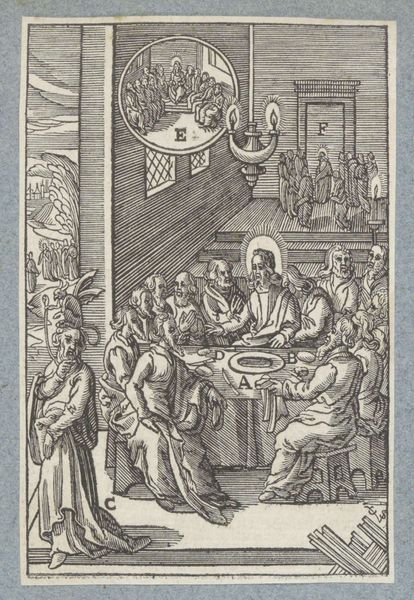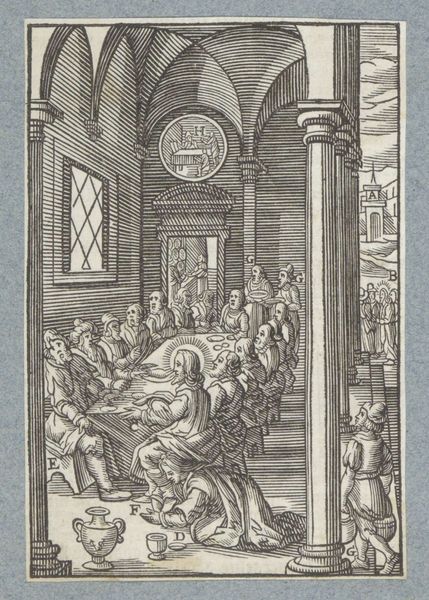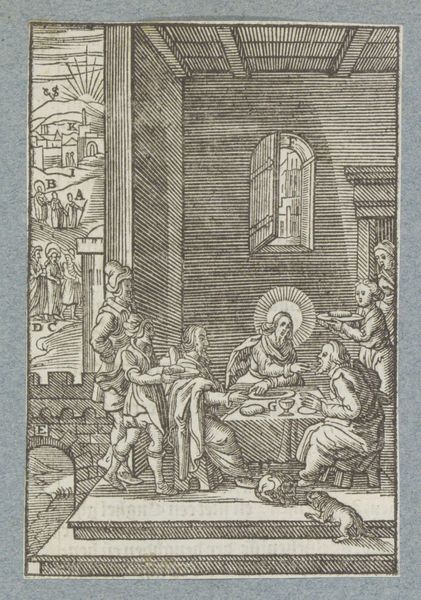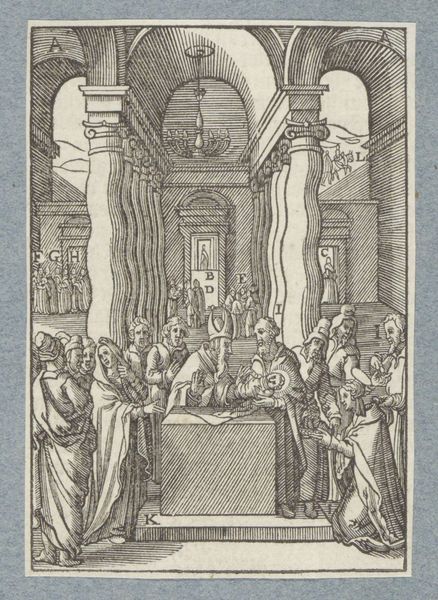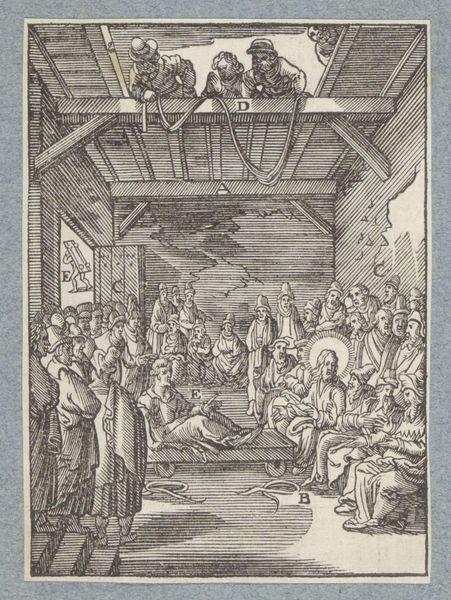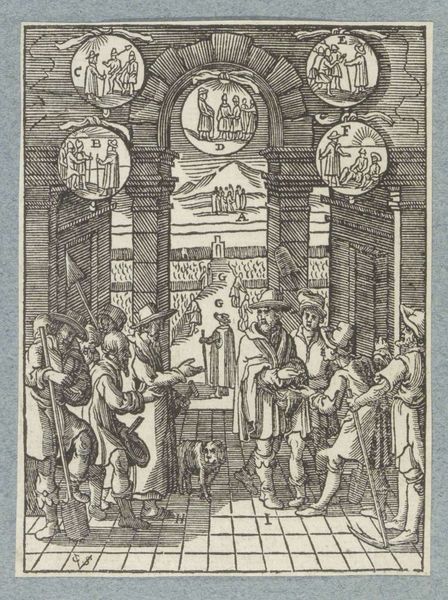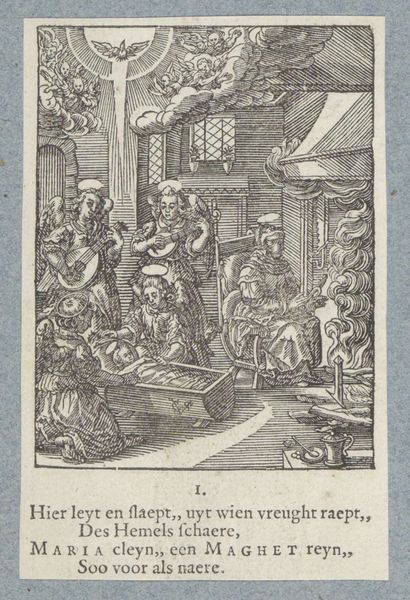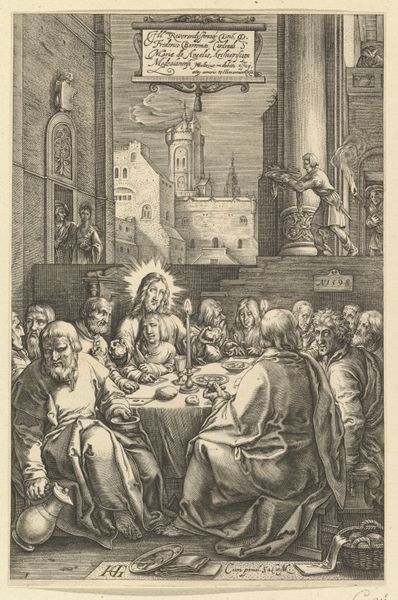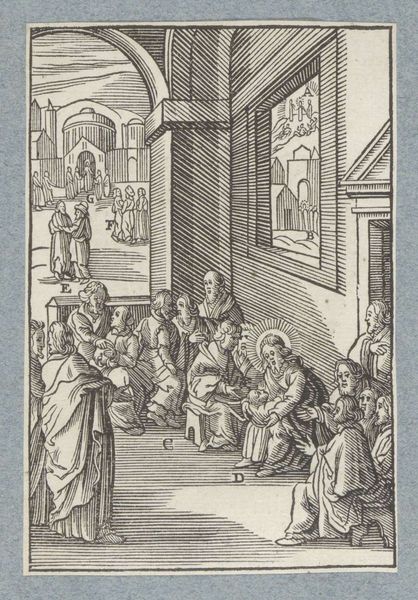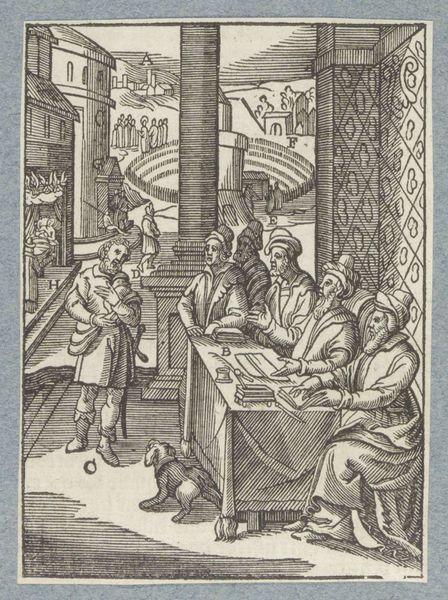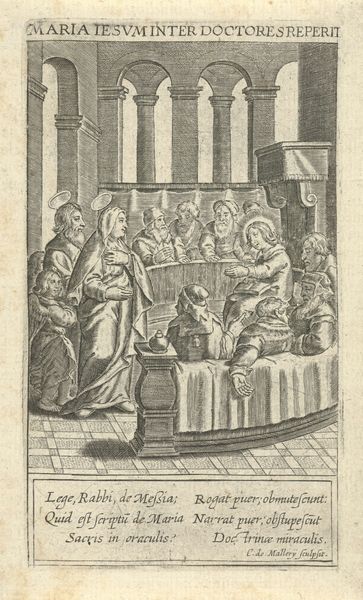
drawing, print, engraving
#
drawing
# print
#
figuration
#
line
#
history-painting
#
northern-renaissance
#
engraving
Dimensions: height 114 mm, width 76 mm
Copyright: Rijks Museum: Open Domain
Curator: The artwork before us, currently held in the Rijksmuseum, is "The Last Supper," an engraving and print realized circa 1628 by Christoffel van (II) Sichem. It employs a linear style characteristic of the Northern Renaissance. Editor: Immediately, I am struck by the density of detail and the almost austere rendering of what is typically a very emotionally charged scene. The line work seems intentionally precise, creating a mood that is more studied than fervent. Curator: Precisely. The visual weight certainly isn't on the faces. For me, the table setting itself and the figure attending in the background stand out. I notice the figure, hunched with effort, perhaps a menial servant adding plates; they are rendered with as much clarity as Christ. What might that say about Sichem's intended audience? Editor: It's interesting you mention the setting. Note also the suspended medallion showing the *same* scene of the Last Supper from an alternative vantage, along with other possible allusions - and this repeated imagery underscores its sacred nature. What symbolic relationship do you discern there between these scenes? And consider too, what would an educated viewer in 1628 been most sensitive to? Curator: It feels like a reinforcement of religious tradition, as if the earlier moment—seen above—is always present, dictating the "correct" interpretation. But look closer at the items on the table; a flagon, plates, and cutlery all so meticulously engraved; the materials involved in communion were very real. Someone had to produce them and bring them into that upper room. Weren't these items also signs of class distinction and trade? How do they operate simultaneously in these material and religious realms? Editor: Absolutely, it’s about intertwining these dimensions. Those material realities are always embedded within, and speak to larger social systems and psychological longings. Christ at the table with wine is already rich with deep associations. By doubling it as the central image, the engraving further cements a powerful symbolic gesture. Curator: Thinking about Sichem and the processes involved to bring forth and reproduce his vision is compelling: the labor, the choice of line engraving, his dedication to minute visual encoding, and the impact of all on a devout audience of the era. Editor: A complex tapestry, where every thread contributes meaning, allowing viewers across the centuries a powerful visual connection with memory and faith.
Comments
No comments
Be the first to comment and join the conversation on the ultimate creative platform.
